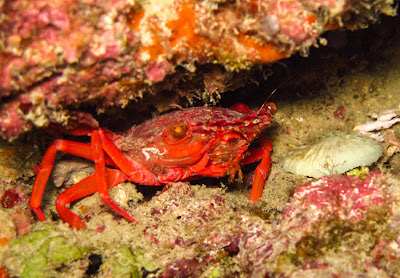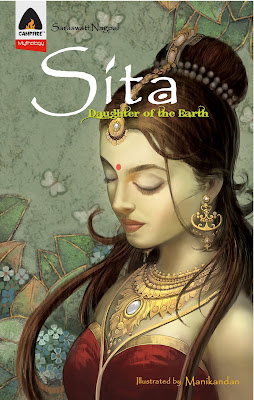Reading Notes: Week 2 Anthology
The Crane and the Crab
Characters: Crane (the 'antagonist'), Fish (the 'gullible'), Crab (the 'protagonist')
Setting(s): A dying pool, a beautiful pool full of potential
POV: Third person, [Potential exploration: who is this narrator? An onlooker, a descendant of the crab, another crane warning younger cranes that nothing comes of being wicked and deceitful?]
Themes: karma, what goes around comes around, wickedness does not pay, an eye for an eye (the crane lost his life in a cruel way just as the fish did)
Favourite sentences/phrases:
Reference: W. H. D. Rouse. The Giant Crab, and Other Tales from Old India.
The Monkey who Gathered Lotuses
Characters: the Bodhisatta in his monkey reincarnation (his third lifetime), his mother, Devadatta in his monkey reincarnation (current king and eater of his children), monkey tribe, ogre (the water demon), [the lotuses]
Setting(s): Forest, mountains, a lake in the midst of the forest guarded by an ogre and its surface littered with flowers/lotuses
POV: Third person
Themes: trickery, 'comeuppance', wickedness does not pay, those with good intention will triumph over those with wicked intention?
Favourite sentences/phrases:
Reference: Tayodhamma Jataka in The Jataka: Vol 1, translated by Robert Chalmers.
*I really enjoyed the stories with the trickster-trick theme because they remind me of Anansi tales from back home. In most portrayals, Anansi the spider often pays the price for his trickery in the end (or in some versions, someone in the story pays for their trickery by Anansi outsmarting them), and almost every story I was told ended with a moral for children to take home with them. The Crane and the crab reminded me of one particular story, Anansi and the turtle. Although most of the stories in the anthology had this theme, I like the ones where both characters (the protagonist and antagonist) are presented as clever, and it takes even more cunning for one to outsmart the other.
Characters: Crane (the 'antagonist'), Fish (the 'gullible'), Crab (the 'protagonist')
Setting(s): A dying pool, a beautiful pool full of potential
POV: Third person, [Potential exploration: who is this narrator? An onlooker, a descendant of the crab, another crane warning younger cranes that nothing comes of being wicked and deceitful?]
Themes: karma, what goes around comes around, wickedness does not pay, an eye for an eye (the crane lost his life in a cruel way just as the fish did)
Favourite sentences/phrases:
"So perished the treacherous Crane, caught by his own trick".
"And he smiled to himself, for that beak was made to eat fish, not to carry them."
"“Crane dear,” said he, “aren’t you going to put me in the lake?”"Thoughts: Was the crane 'wrong' for what he did since it was in his nature to prey on the fish? Was it not what he did but how he did it (tricking the fish into believing they were going to a better place)? Why did the crab not help the other fish if he knew the crane's plan? Was the crane's punishment equal to the crime?
Reference: W. H. D. Rouse. The Giant Crab, and Other Tales from Old India.
Crab peaking out from his hole. Source: Flickr
The Monkey who Gathered Lotuses
Characters: the Bodhisatta in his monkey reincarnation (his third lifetime), his mother, Devadatta in his monkey reincarnation (current king and eater of his children), monkey tribe, ogre (the water demon), [the lotuses]
Setting(s): Forest, mountains, a lake in the midst of the forest guarded by an ogre and its surface littered with flowers/lotuses
POV: Third person
Themes: trickery, 'comeuppance', wickedness does not pay, those with good intention will triumph over those with wicked intention?
Favourite sentences/phrases:
"“Never mind; take me there, mother," said the Bodhisatta; "I shall know what to do.”"
"But I'll get the lotuses," said he, "without going into the water at all."Thoughts: Interesting how the ogre became humbled by the Bodhisatta; curious as to why in many stories including the reincarnations of Bodhisatta, everything occurs in specific numbers: his father's heart broke into seven pieces, he had three qualities
Reference: Tayodhamma Jataka in The Jataka: Vol 1, translated by Robert Chalmers.
White Lotus Flower. Source: Flickr
*I really enjoyed the stories with the trickster-trick theme because they remind me of Anansi tales from back home. In most portrayals, Anansi the spider often pays the price for his trickery in the end (or in some versions, someone in the story pays for their trickery by Anansi outsmarting them), and almost every story I was told ended with a moral for children to take home with them. The Crane and the crab reminded me of one particular story, Anansi and the turtle. Although most of the stories in the anthology had this theme, I like the ones where both characters (the protagonist and antagonist) are presented as clever, and it takes even more cunning for one to outsmart the other.





Comments
Post a Comment